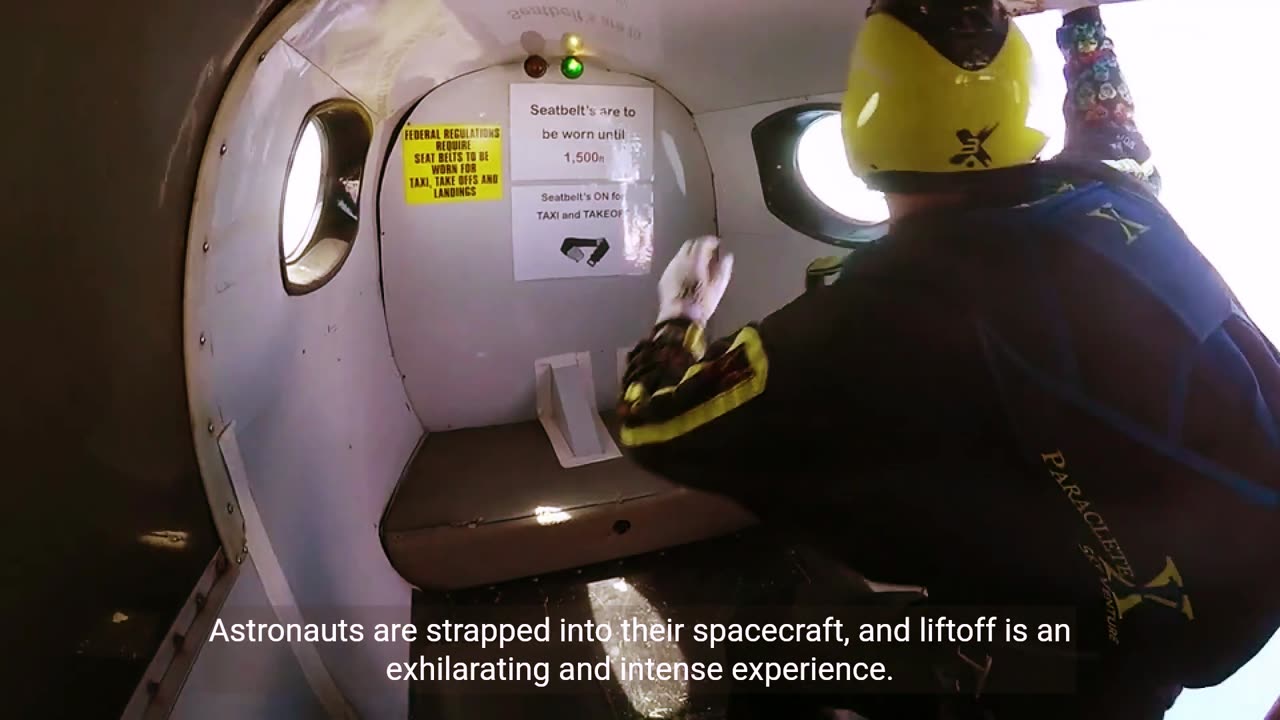Premium Only Content

Astronauts on a 48-day mission in space
#astrology #amazingfacts #space #roket #day #exercise #mealtime #healthmonitoring Pre-Mission Preparation:
Before astronauts launch into space, an extensive period of training and preparation is essential. This phase can last for months or even years and includes rigorous physical fitness training, simulations, and education about the spacecraft, equipment, and mission objectives. Astronauts must also familiarize themselves with the scientific experiments they will conduct while in space.
Launch and Entry into Space:
The 48-day mission begins with a dramatic launch from Earth. Astronauts are strapped into their spacecraft, and liftoff is an exhilarating and intense experience. Once the spacecraft reaches orbit, astronauts transition into a microgravity environment, where they will spend the majority of their mission.
Daily Routine in Space:
Astronauts in space follow a carefully planned daily routine to ensure their well-being and the success of the mission. This routine typically includes:
Sleep: Sleep is essential for astronauts' cognitive and physical health. Astronauts sleep in specially designed sleeping bags or compartments to prevent themselves from floating around in their sl
Scientific Experiments:
A significant portion of the mission is dedicated to conducting scientific experiments. These experiments vary depending on the mission's objectives but can include studies in various fields such as biology, physics, and Earth sciences. For example:
Microgravity Research: Scientists conduct experiments to better understand the effects of microgravity on various materials and biological systems.
Earth Observation: Astronauts use specialized equipment to observe and document Earth's natural phenomena, weather patterns, and human-made changes to the planet.
Medical Research: Medical experiments are conducted to study the effects of space on the human body and to develop countermeasures for issues like muscle atrophy and bone loss.
Space Technology Testing: New technologies and equipment are often tested in space to assess their performance and durability in the extreme environment.
Educational Outreach: Astronauts engage in educational activities, including live broadcasts to schools, to inspire and educate the next generation of scientists and engineers.
Maintenance and Repairs:
Maintaining the spacecraft is essential to ensure the safety of the crew and the success of the mission. Astronauts regularly inspect and perform maintenance on various systems, including:
Life Support Systems: These systems provide astronauts with oxygen, remove carbon dioxide, and filter and purify water.
Communication and Navigation Systems: Astronauts ensure that they can communicate with mission control and accurately navigate the spacecraft.
Spacecraft Exterior: Regular inspections are conducted to check for damage from micrometeoroids or other space debris.
Emergency Procedures: Astronauts rehearse emergency procedures to be prepared for any unexpected situations, such as equipment malfunctions or medical emergencies.
Spacewalks (Extravehicular Activities - EVAs):
During a 48-day mission, astronauts may conduct spacewalks to perform maintenance, repair, or installation tasks outside the spacecraft.
Health and Well-Being:
Astronauts' health and well-being are closely monitored throughout the mission. This includes:
Physical Health: Regular exercise, proper nutrition, and medical check-ups are essential to ensure astronauts remain healthy and can complete their mission.
Mental Health: Living and working in a confined space for an extended period can be psychologically challenging.
Radiation Protection: Astronauts are exposed to higher levels of radiation in space. Protective measures, such as shielding and monitoring, are in place to minimize these risks.
Sleep Management: Maintaining a healthy sleep schedule is crucial for astronauts' cognitive performance and overall well-being.
Return to Earth:
At the end of the 48-day mission, astronauts prepare for reentry into Earth's atmosphere. This phase involves:
Orbital Maneuvers: The spacecraft's trajectory is adjusted to ensure a safe reentry angle.
Reentry: The spacecraft reenters Earth's atmosphere, and the heat shield protects it from the intense heat generated during this phase.
Parachute Deployment: Parachutes are deployed to slow the spacecraft's descent.
Splashdown or Landing: Depending on the mission, the spacecraft either splashes down in the ocean or lands on solid ground.
Recovery: Astronauts are retrieved from the spacecraft and undergo medical evaluations to ensure their health after the mission.
Conclusion:
A 48-day mission in space is a complex and challenging endeavor that requires careful planning, rigorous training, and constant diligence from astronauts. These missions contribute valuable scientific knowledge, advance technology, and inspire future generations
-
 23:47
23:47
GritsGG
1 day agoThe Forgotten Best Sniper Support AR!
9.89K3 -
 1:15:48
1:15:48
The Pascal Show
17 hours ago $0.10 earnedMUGSHOTS RELEASED! Emmanuel Haro's Parents Mugshot Released To The Public
8.29K1 -
 14:45
14:45
BlabberingCollector
20 hours agoKings Cross Station SET LEAKS! | Harry Potter HBO Show Update & News
7.57K1 -
 33:20
33:20
SB Mowing
9 days agoHealth Struggles + Endless Rain = A Yard Out of Control
16.8K18 -
 1:09:42
1:09:42
Mike Rowe
4 days agoHow Did THIS Dirty Job Make Tommy Mello A Billionaire?! | #447 | The Way I Heard It
74.9K20 -
 10:11:30
10:11:30
SpartakusLIVE
12 hours agoThe BADDEST Duo in WZ Exhibits PEAK Physique || Duos w/ Sophiesnazz to start, quads later
174K1 -
 2:49:37
2:49:37
RattlesnakeTV
23 hours ago $0.28 earnedLIVE DEBATE! Lord Jake vs Crazy Feminist
35.1K21 -
 4:00:42
4:00:42
Badlands Media
15 hours agoThe Narrative Ep. 35: Codex of Truth
100K48 -
 3:55:56
3:55:56
Due Dissidence
18 hours agoSchmuley TRASHES Shapiro, Maxwell Sings For Pardon, Uhuru Doc Preview - Live From St. Louis!
52.6K51 -
 LIVE
LIVE
Lofi Girl
2 years agolofi hip hop radio 📚 - beats to relax/study to
255 watching